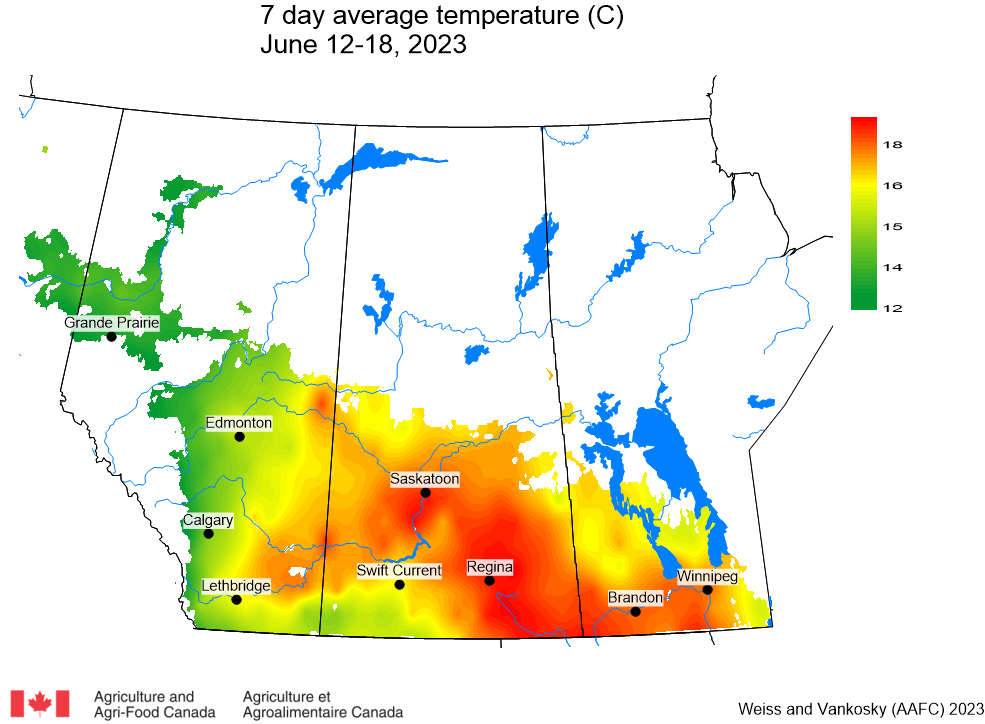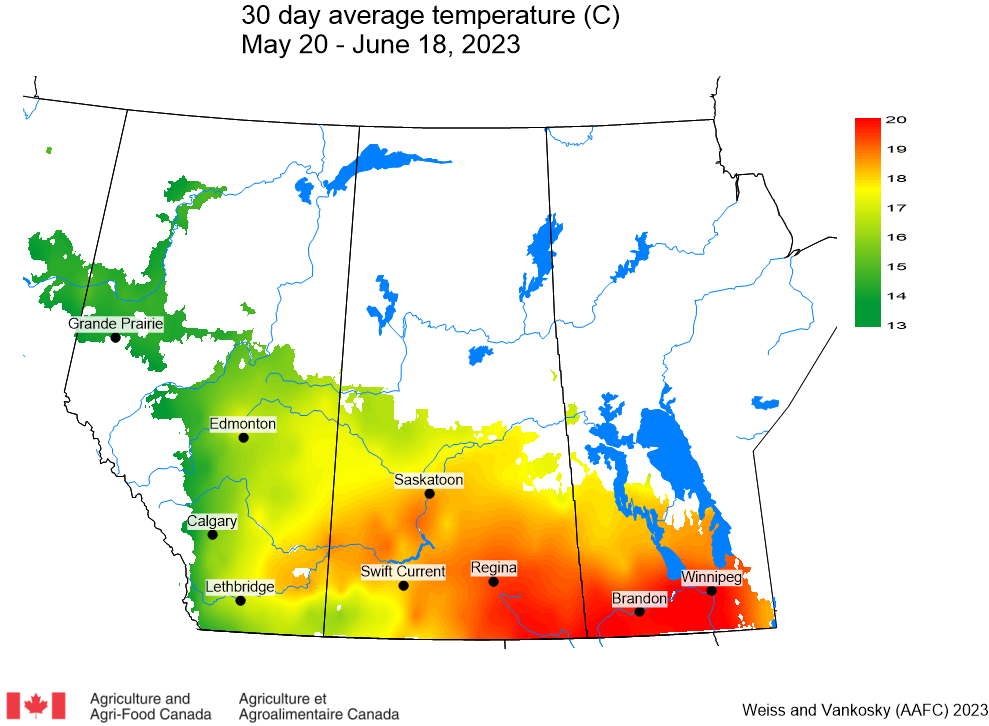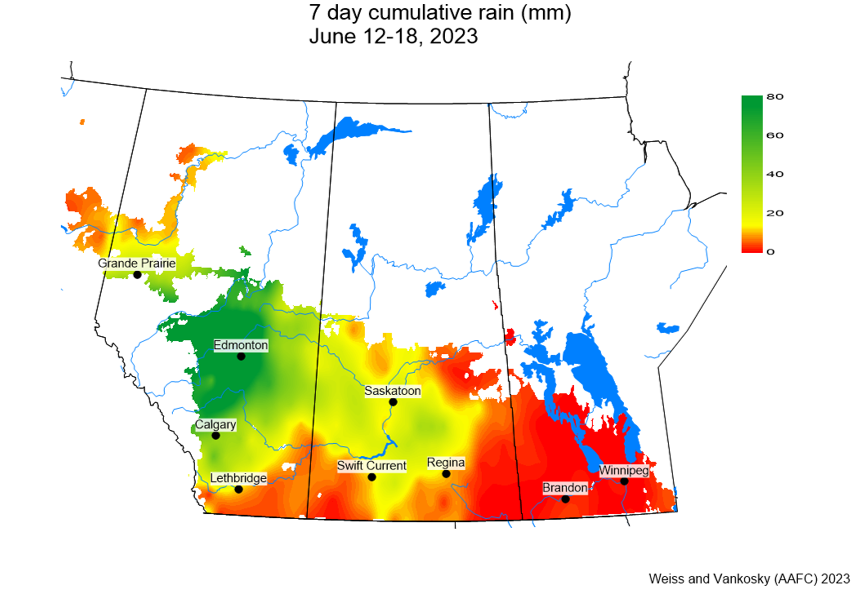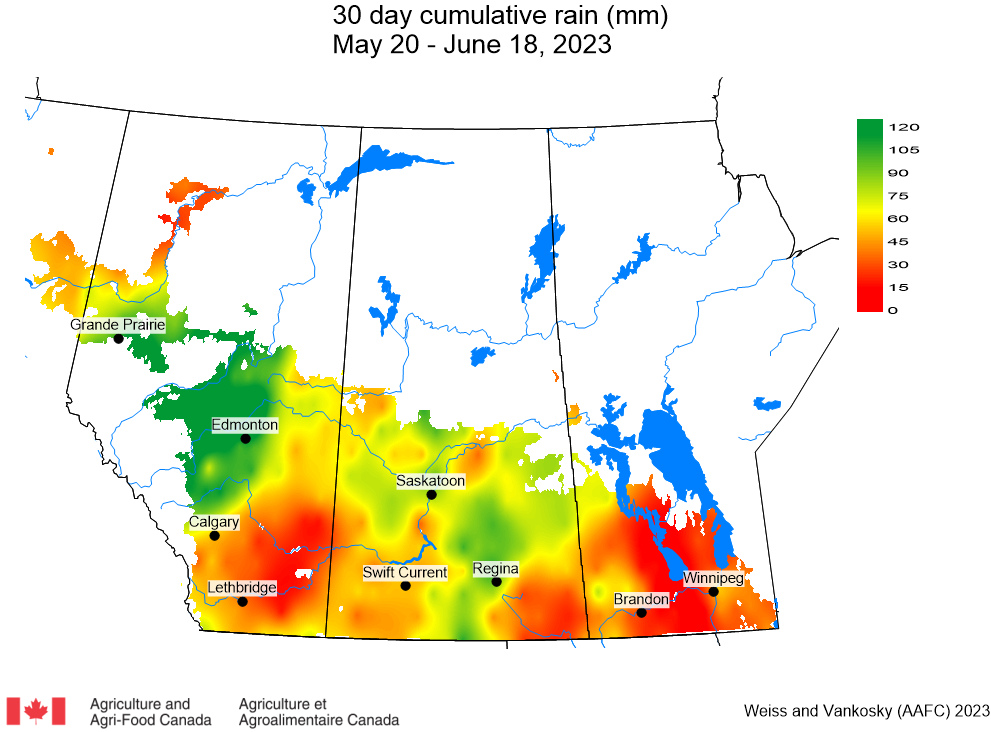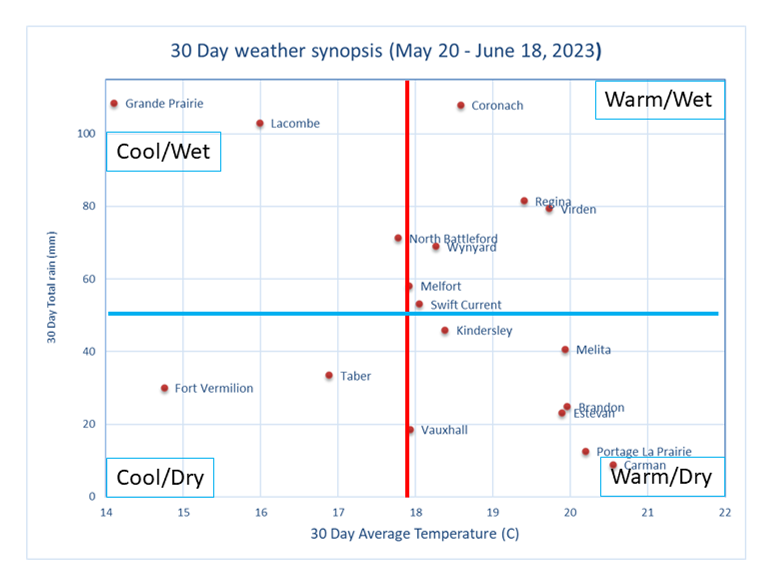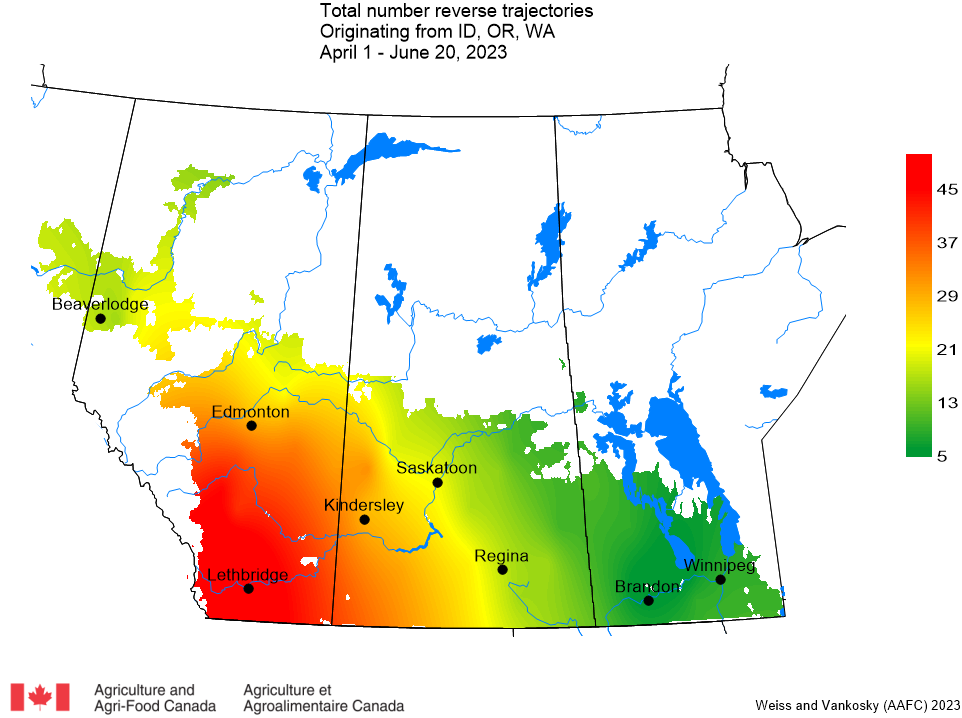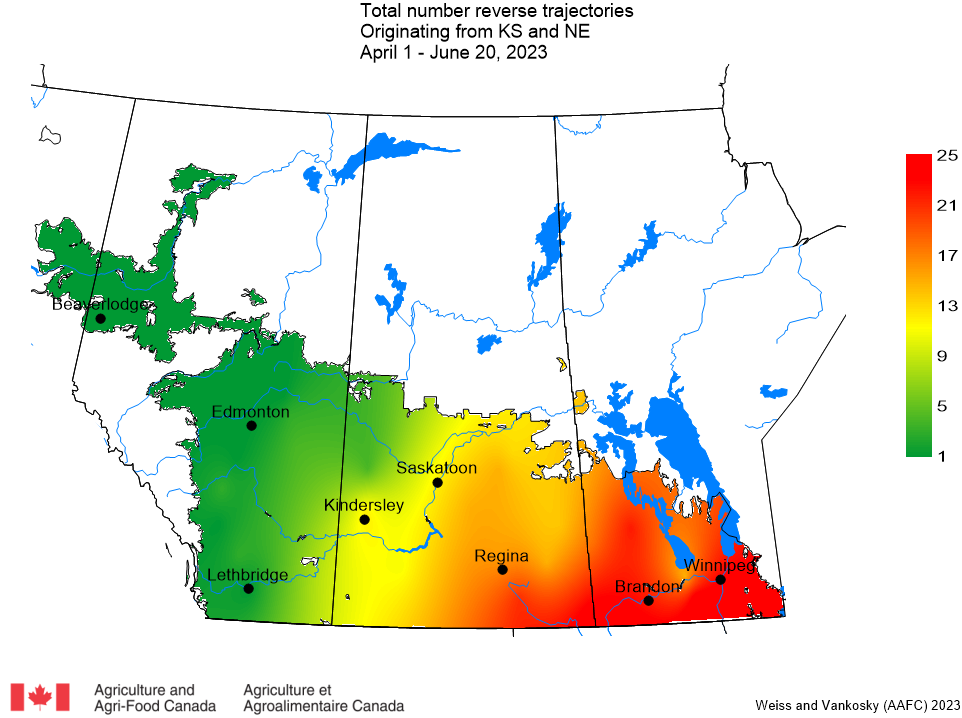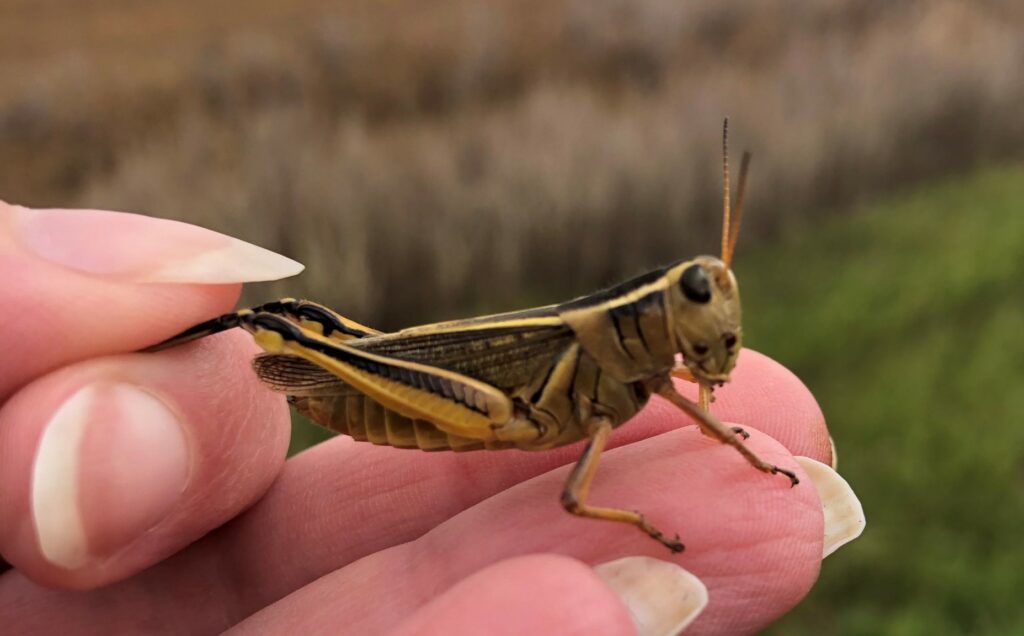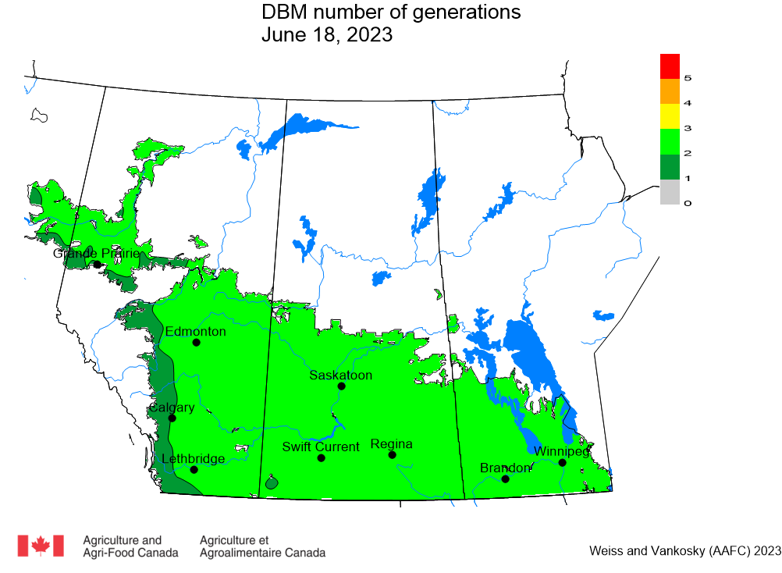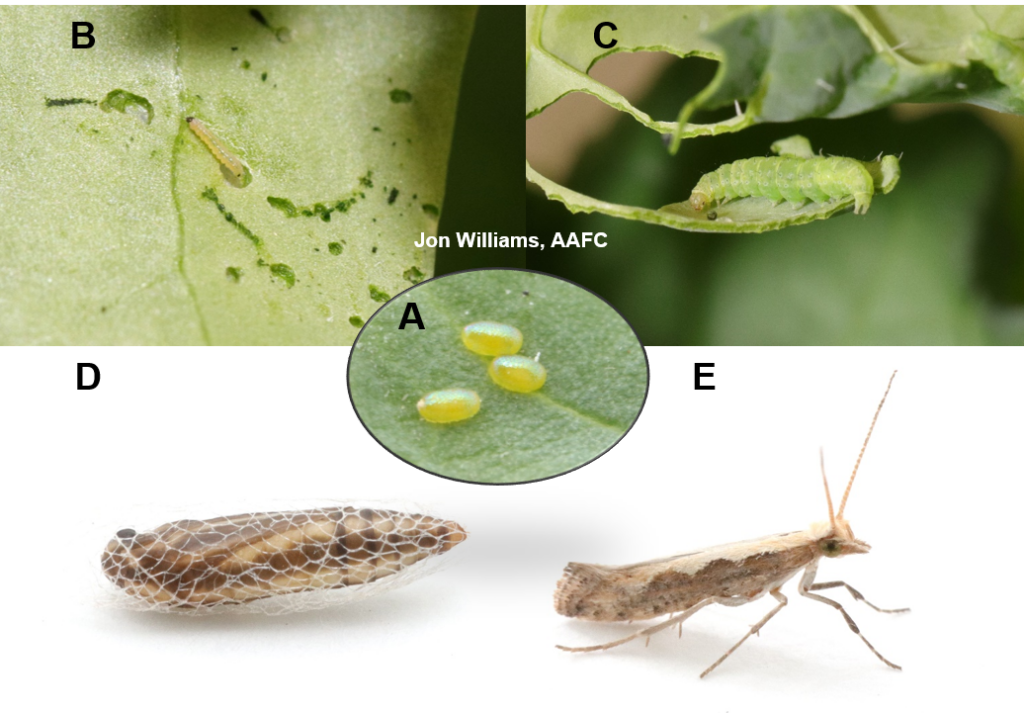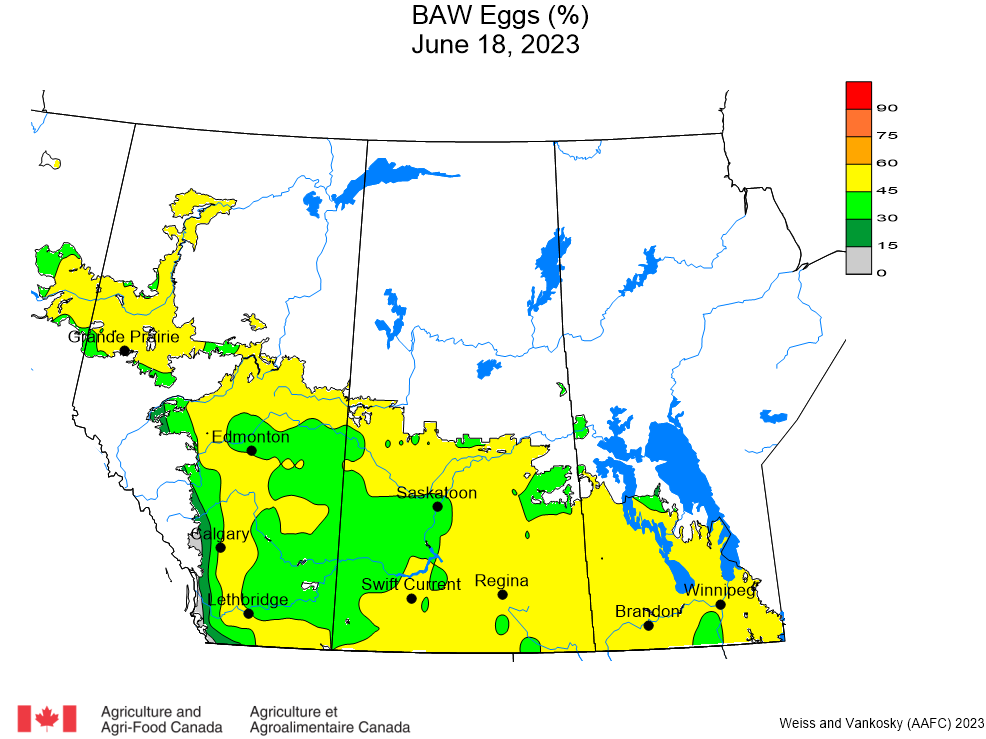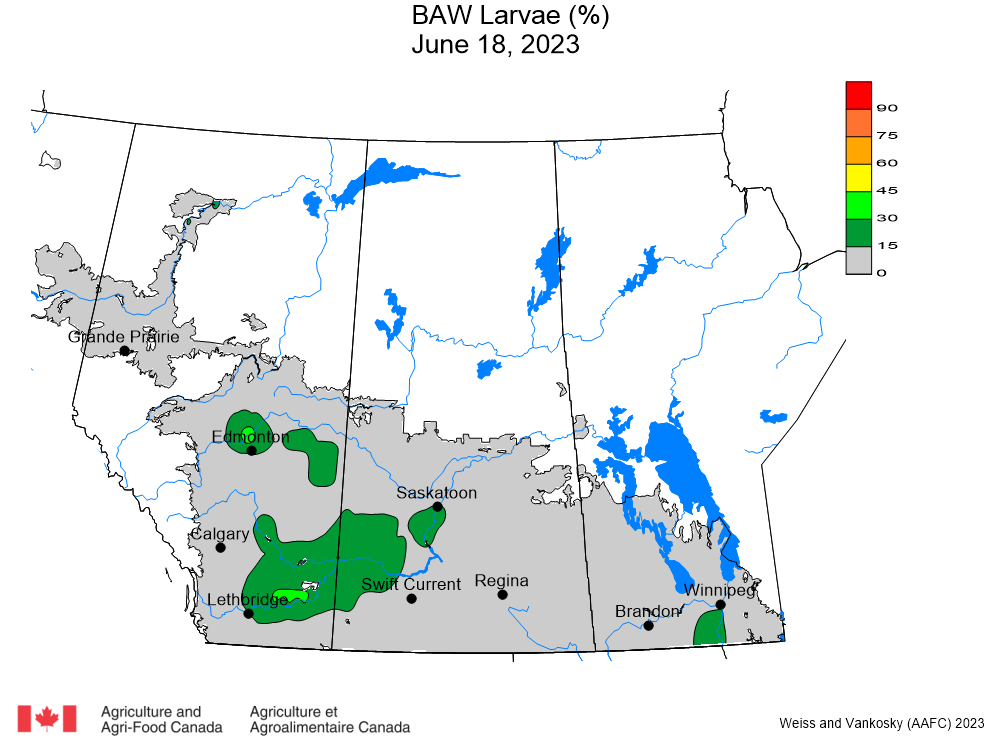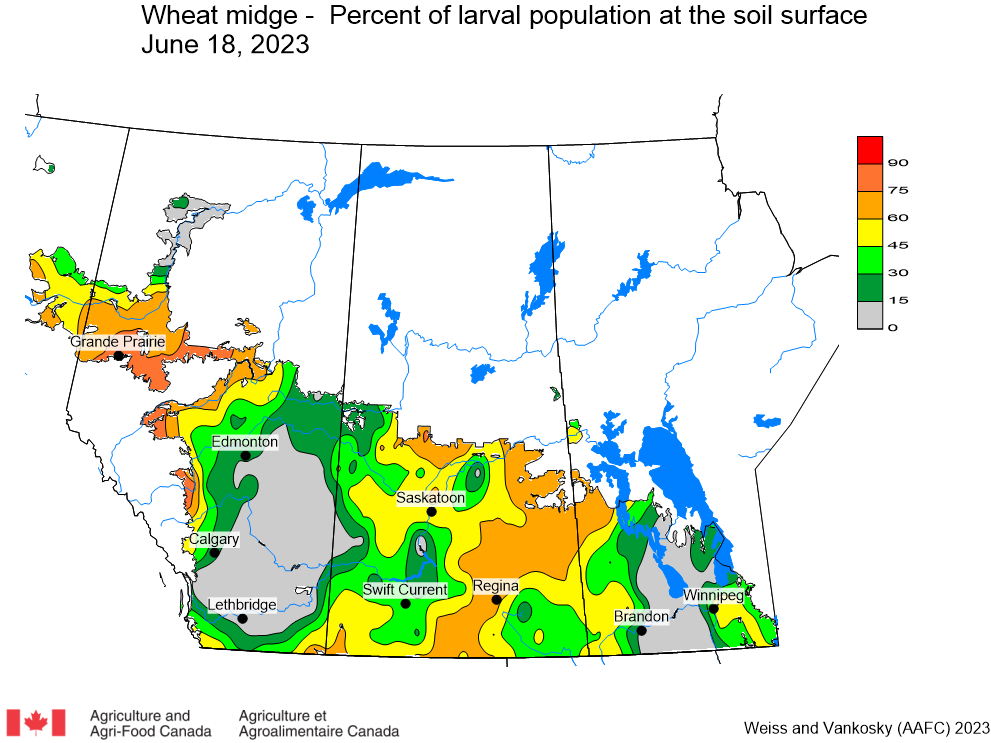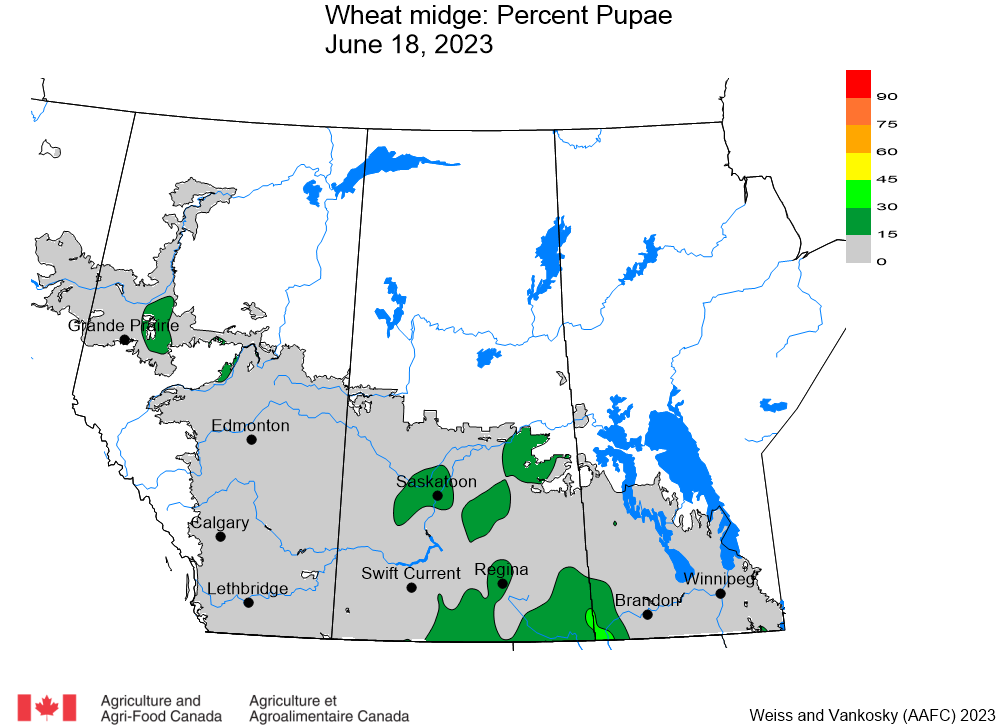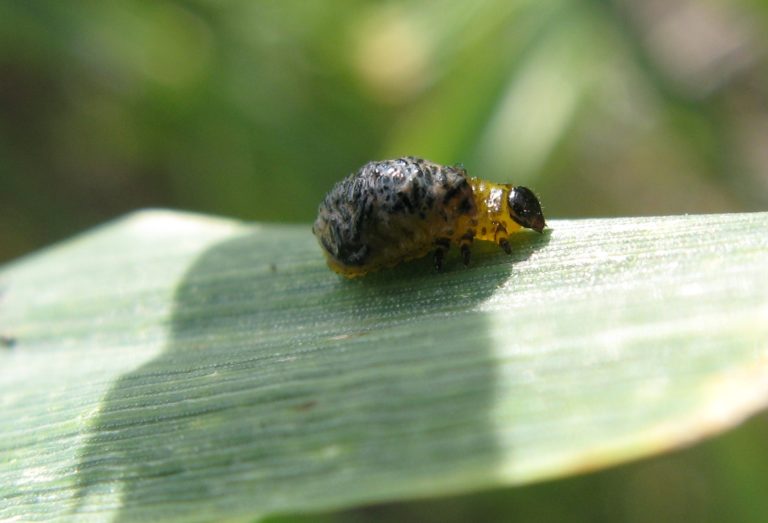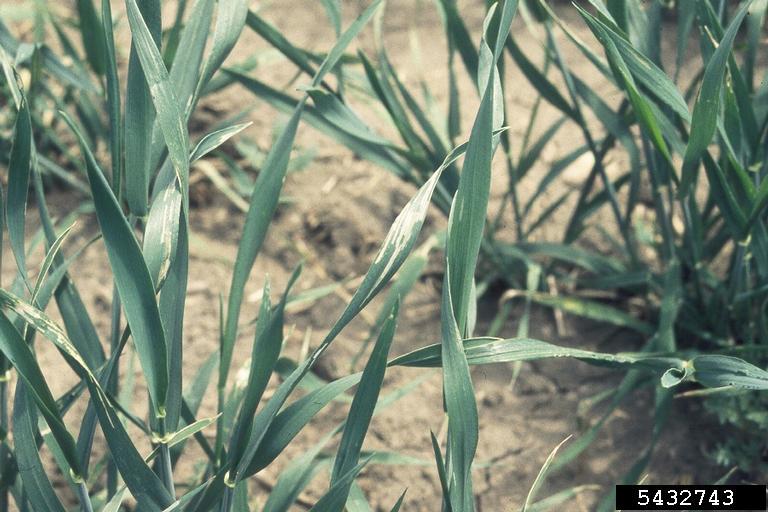It’s officially summer!
Grasshoppers thrive in warm, dry conditions. The first adult two-striped grasshoppers of 2023 were reported in southern Alberta and Saskatchewan in the last 5 days, although the majority the grasshopper population are still nymphs. Signs of damage in the roadsides and field edges are being reported. Now is the time to scout for grasshoppers in your fields.
Diamondback moths develop rapidly when it is warm and their population densities can build up quickly with each generation. Like other insects, bertha armyworm development is also well ahead of schedule. Other green caterpillars, like clover cutworm and alfalfa looper, might also be found in canola crops at this time of year. Correctly identifying green caterpillars is important to ensure the correct economic thresholds (where available) and management tactics are used.
This year could be an interesting year for wheat midge. Some areas have had sufficient rain to trigger the end of diapause and the completion of larval and pupal development, but crop staging is also widely variable. Scouting for wheat midge will be important in the next few weeks.
This week, the Insect of the Week featured the cereal leaf beetle, a pest of cereal crops. Next week, we will feature a very important natural enemy of cereal leaf beetle, the parasitoid Tetrastichus julis.
Remember, insect Monitoring Protocols containing information about in-field scouting as well as information about insect pest biology and identification.
To receive Weekly Updates automatically, please subscribe to the website!
Questions or problems accessing the contents of this Weekly Update? Please contact Dr. Meghan Vankosky (meghan.vankosky@agr.gc.ca) to get connected to our information. Past Weekly Updates, full of information and helpful links, can be accessed on our Weekly Update page.

